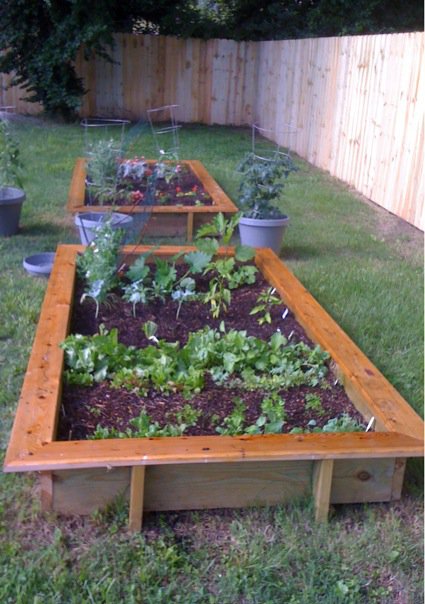Home > Lifestyle > Garden > 3 Helpful Gardening Lessons
3 Helpful Gardening Lessons
I like the idea of growing my own food, but I’m not especially talented at gardening. Still, I enjoy a challenge, and unlike most people who rely on Google for horticulture help (they are experts, after all), I have a secret weapon – my mother.
Green thumbs must skip a generation, or else this trait is passed down from the paternal side. My mom is a gardening guru, and I don’t use that term lightly. Last summer, she grew 70 tomato plants; put up dozens of bags of corn, squash and berries; and canned green beans, pickles and, my favorite, those tomatoes – all with a broken leg.

Last year was my first attempt at raised-bed gardening, and I harvested some salad greens, too much zucchini, too few peppers, one radish, a couple of cucumbers and spindly carrots, and about 15 glorious tomatoes. And I couldn’t have done it without many, many phone calls to my mom.
Here are three important home gardening lessons I’ve learned so far:
1. Dirt matters. Did you know how much chemistry goes into growing food? On the day my raised beds were built, my parents showed up with a truckload of soil, fertilizer and lime. Correctly preparing the soil so plants will grow requires a specific formula of nitrogen, phosphorus and potassium. I’m not exaggerating when I say formula: 3:1:x ratio of N:P2O5:K2O is an actual example from the Alabama Cooperative Extension System.
For those of us who get cross-eyed when math is involved, fertilizer needs three times as much nitrogen as potassium, and that combines with lots of topsoil, some limestone if needed (depending on soil quality) and organic matter – peat moss, compost, dry leaves, grass clippings or even sawdust. If you think that’s complicated for a little backyard garden, imagine how much science a farmer has to know to prepare the soil for a 300-acre cornfield.

2. Read the directions. Plants are pretty affordable. I spent all of $2 on some cute little squash plants and read that they should planted 5 feet apart in direct sunlight. I didn’t really measure and added some eggplant, habanero peppers and last-minute tomatoes about 3 feet away, since I’d already run out of space elsewhere.
Now, my squash plants have exploded and are attacking my other plants – literally, the tendrils are wrapping themselves around tomato cages and the pepper plants. My mom warned me not to crowd my plants, but I just can’t get it in my head how massive they will turn out to be.
The lesson here is to always read the instructions carefully, just as with recipes. You can’t skip a step or just guess on how much baking soda to use, or you’ll end up with something unedible.
3. Food really does taste better if you know how it’s grown. My first harvest is always spring greens – a mix of lettuce, kale, spinach and the like. When I want a salad, I just step out my back door and snip off some leaves.

Then my friend gave me some extra kale from her CSA, and it was about 5 times the size of mine. But rather than be discouraged, I appreciated – and enjoyed – it even more. I know how much time goes into watering, weeding and keeping the neighborhood bunny out of my beds – I can’t fathom how much effort goes into running a whole farm. Especially this year, when my mom’s garden is too wet and wind-damaged from the rainy spring, and it wasn’t under a few feet of water – nor is she depended upon to feed anyone other than her own family. Gardening on a small scale has helped me understand the difficult lifestyle that farmers lead.



